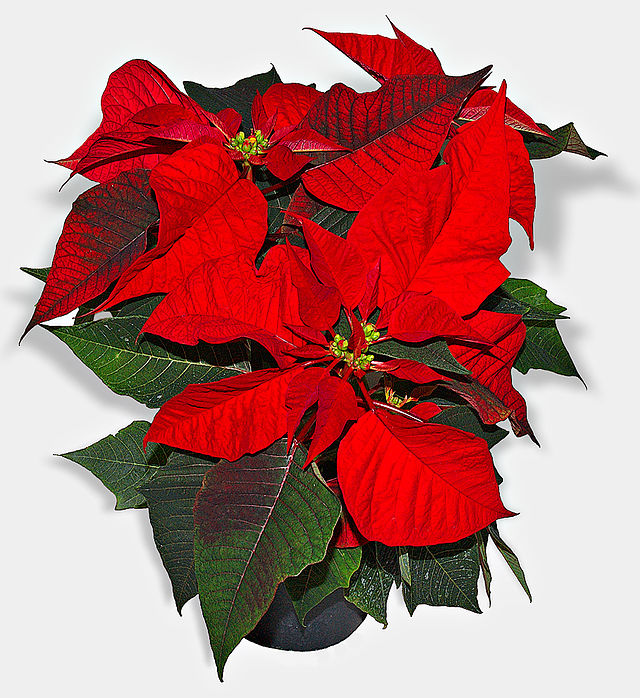





A Poinsettia Plant, native to Mexico, is the most popular indoor flowering plant sold in the U.S. even though it is only available six weeks of the year. The colorful parts of the Poinsettia Plant are really modified leaves called bracts. Many people mistakenly think the bracts are the flower petals of the plant. Although these bracts are quite attractive they are not part of the flowers. The real flowers are quite inconsequential and are located inside the small yellow part of the Poinsettia called a cyathia. There is a cyathia in the center of each group of bracts. Selecting the right poinsettia is the key to having a plant that stays colorful and beautiful the entire holiday season. Ideally there should be green leaves all the way to the soil line. The plant should be well balanced and not top heavy. The real flowers should be barely open, and there should be no pollen on the bracts. Whether you chose the ever popular red Poinsettia or any of the many new colors such as white, pink, salmon, yellow, marble, orange, or jingle bells, this is a wonderful holiday plant that can sit on a table, be trained as a small tree, or be placed in a frame with 20-50 other poinsettias to form a magnificent huge Poinsettia Christmas Tree. There are even hanging baskets of poinsettias available. Poinsettias, despite all rumors, are not poisonousPlants are a great addition to homes and offices, but it’s important to know whether your plants are dangerous to children, pets, or even adults. Some plants contain chemicals such as oxalates, solanine, glycosides, or alkaloid lycorine that may cause vomiting, nausea, diarrhea, swelling and redness of the mouth, throat, and lips, and trouble breathing. Touching parts of certain plants, especially the sap, may cause various skin irritations. The weight and age of the human or pet involved, and the part and amount of plant eaten determine how severe the reaction to the toxins will be. Although plants may be listed as non-toxic, they can still cause individual allergic reactions. If there is any question after a houseplant has been ingested or touched immediately call the Poison Control Center 1-800-222-1222 The Handbook of Poisonous and Injurious Plants [Paperback]is an excellent reference to keep around if you have young children and pets., although the milky sap of the plant may cause minor skin irritations.

Copyright © www.100flowers.win Botanic Garden All Rights Reserved